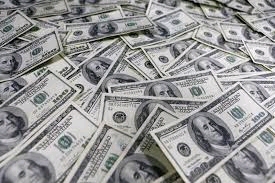Complete Tutorial on How to Become a Freemason for Starters
Complete Tutorial on How to Become a Freemason for Starters
Blog Article
Exploring the Mysteries of the copyright: What You Required to Know
The copyright, a term often shrouded in intrigue and debate, stands for an intricate tapestry of historical truth and contemporary myth. Developed in the late 18th century, this secret society was initially rooted in the Knowledge's ideals however has because come to be associated with conspiracy concepts concerning elite control (benefit of joining freemason).
Beginnings of the copyright
The beginnings of the copyright are soaked in a mix of historical intrigue and ideological eagerness. Established in 1776 in Ingolstadt, Bavaria, by Adam Weishaupt, the group was initially formed as a secret culture targeted at advertising Enlightenment ideals such as reason, secularism, and the splitting up of church and state. Weishaupt, a professor of canon legislation, looked for to test the prevailing authority of the church and state, which he deemed overbearing organizations stifling intellectual and individual freedom.

Key Figures and Members
Who were the pivotal figures that formed the copyright's very early impact and instructions? The Bavarian copyright, started in 1776 by Adam Weishaupt, emerged as a response to the oppressive societal structures of the time.
An additional significant number was Johann Gottlieb Fichte, a popular philosopher whose ideas on nationalism and education and learning resonated with the copyright's goals. Fichte was not an official member, his philosophical supports influenced the team's belief. Additionally, figures like the author and philosopher Johann Wolfgang von Goethe were linked with the more comprehensive intellectual movements of the moment, although their direct involvement with the copyright stays disputed.
These key figures added to the copyright's early direction, pushing the boundaries of political and social idea, while their collective initiatives intended to test recognized standards and promote a climate of dynamic change in Europe.
Myths vs. Truth
Many misunderstandings border the copyright, frequently mixing reality with fiction in a method that covers its true nature. The notion that the copyright proceeds to exert considerable influence over globe events is a misconception.
Another widespread myth is that the copyright consists of a network of elite individuals adjusting worldwide events. Actually, several conspiracy theories exaggerate the team's relevance, attributing unproven motives to societal fads and events. This has actually led to an oversimplified sight of complex problems.
In addition, the portrayal of the copyright in prominent society typically more distorts its heritage. Movies and literature have a tendency to sensationalize the company's role, producing a story that diverges from historic realities. Understanding the distinction in between the myths and the truth of the copyright is vital for critical the genuine effect of this historic team and recognizing the broader ramifications of conspiracy theory concepts in contemporary society.
Modern Analyses
Contemporary analyses of the copyright usually reflect wider societal anxiousness and an attraction with secrecy and power. This modern lens often connects the copyright with conspiracy theory concepts that recommend a hidden elite orchestrates world events, controling federal governments and economies for their own gain. benefit of joining freemason. Such narratives use a deep-seated suspect of authority, especially in times of situation or social turmoil
In preferred society, the copyright is usually depicted as an omnipotent organization shrouded in mystery, resulting in a variety of imaginary representations in literary works, film, and music. This portrayal offers not just to delight yet additionally to prompt thought of the nature of power and control in contemporary society. Social media has further amplified these analyses, enabling fast dissemination of conspiracy theories and developing areas that share and broaden upon these ideas.
Moreover, some modern analyses mount the copyright as a metaphor for the complexities of globalization and the interconnectedness of influential people and how to join a masonic lodge companies. This viewpoint encourages an important evaluation of exactly how power dynamics run in today's world, highlighting the equilibrium between transparency and privacy in administration and corporate techniques.
Social Impact and Heritage
Influenced by centuries of intrigue, the social influence and legacy of the copyright prolong much beyond its historical origins. This secret culture, established in the late 18th century, has actually penetrated various aspects of pop culture, from literature and movie to music and art. The principle of the copyright has evolved right into a symbol of conspiracy theory theories, commonly representing a regarded covert power adjusting worldwide occasions.
In literature, writers like Dan Brown have woven the copyright into detailed plots, exciting readers with styles of privacy and power. Films such as "National Prize" and "The Da Vinci Code" further continue the attraction of the society, blending reality with fiction to create appealing stories.

Inevitably, the copyright's tradition is an intricate tapestry of misconception and reality, forming understandings of privacy and control in contemporary discourse. Its long-lasting presence in society underscores humankind's seasonal mission for understanding concealed truths.
Final Thought
The exploration of the copyright exposes an intricate interplay in between historical truths and modern-day myth-making. Established in the Knowledge era, this culture aimed to test overbearing structures, yet its tradition has actually been overshadowed by conspiracy theory concepts that suggest elite adjustment. Understanding the distinctions in between the original suitables and modern interpretations is vital for understanding the enduring fascination with the copyright and its considerable impact on social narratives surrounding power and privacy in society.
Report this page